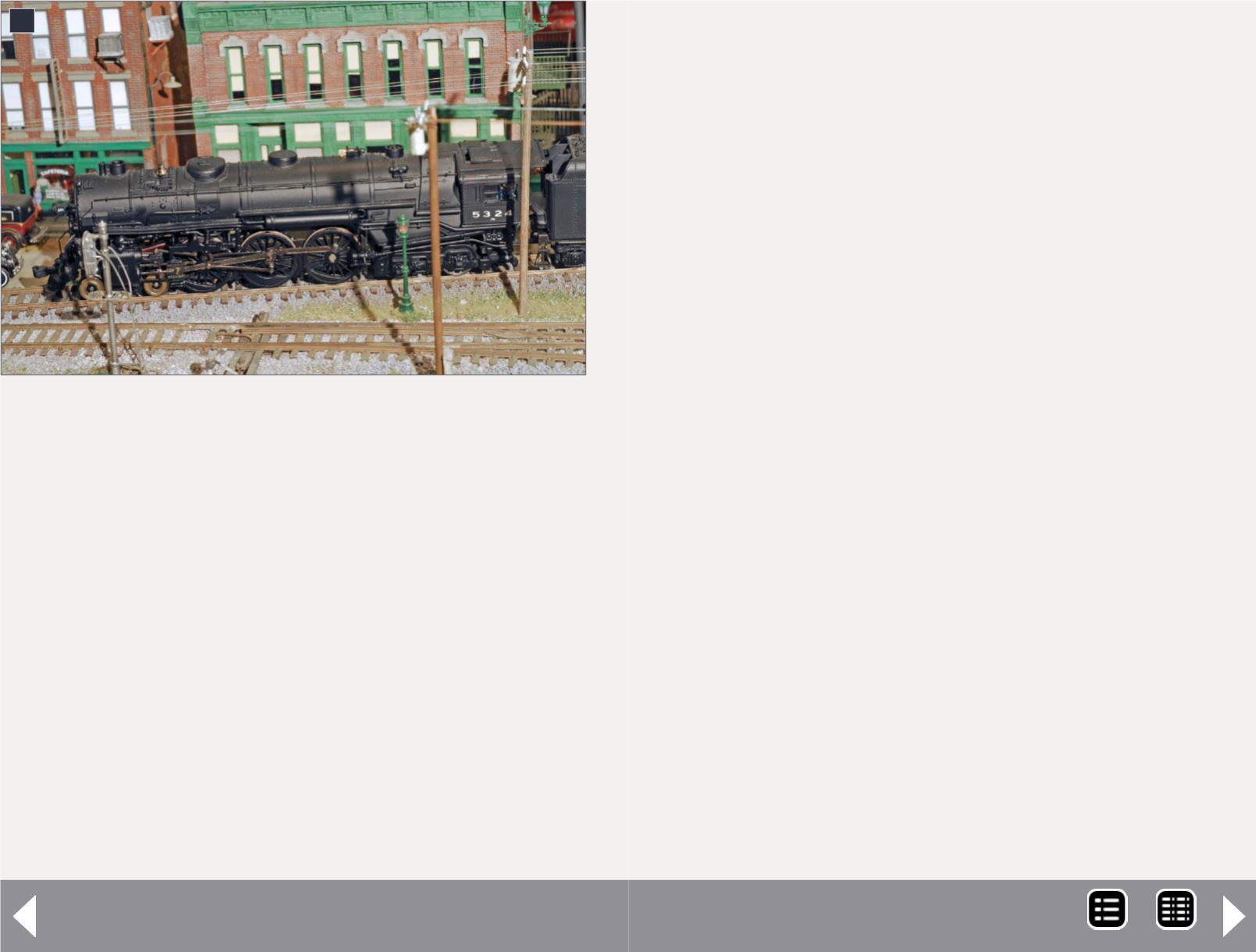
Construction and Track
Given the limited space, I had to use a single-track mainline,
rather than two tracks as used historically by the railroads in
this area.
The 10’x12’ layout is designed mainly for point-to-point opera-
tions, but I made provisions as well for continuous running,
which can be achieved by throwing a single turnout.
I used conventional open-grid and L-girder benchwork, with ½”
plywood and Homasote cut to size (very dusty), and cork road-
bed on top. This combination provides a very quiet surface for
the continuous running of trains. The layout is supported on
2”x2” pine girders, and the rail is Micro Engineering code 83 on
the mainline, and Micro Engineering code 70 in the yards.
Turnouts are from Micro Engineering, and all feature
Hankscraft slow-action switch motors. The turnouts are wired
for DCC, and all of them feature live frogs. They are directly
wired to signals and to LEDs in the fascia through DPDT elec-
tronic switches. This arrangement shows the current position
of all turnouts. I used Woodland Scenics fine gray ballast held
in place with diluted white glue
I chose to use Micro Engineering turnouts because of their
metal frogs, which make it easier to run steam locomotives. I
have begun the long process of wiring Fast Tracks Frog Juicers
into all my turnouts.
Scenery
I employed many traditional scenery methods. Landforms and
mountains use cardboard strips to form basic terrain contours.
Rather than dipping paper towels in soupy plaster (very messy)
I coated them with full strength white glue using a 1” paint
brush; this eliminates most of the mess associated with drip-
ping plaster.
The rock work is cast in rubber molds which I made myself
using lumps of coal and other suitable rocks. This helped give
these features a natural appearance. These are stained with
suitable colors suitable for their location.
I made extensive use of the “ground goop” formula, which
was published in an article by Lou Sassy in
Model Railroader.
It
is hard to beat for holding scenery materials together once it
dries hard, and is easily colored to represent earth tones.
For the mountainous scenery, I used Paul Scoles’ technique
shown on his DVDs on scenery building. For the ground cover, I
used real natural materials like leaves, which were then ground
5. With the temperature climbing around midday, a
NYC Hudson 4-6-4 Hudson heads for a much-needed
maintenance run toward the New York Central yard at
South Junction.
5
Lake Tupper & South Junction- 4
MRH-Jul 2014


